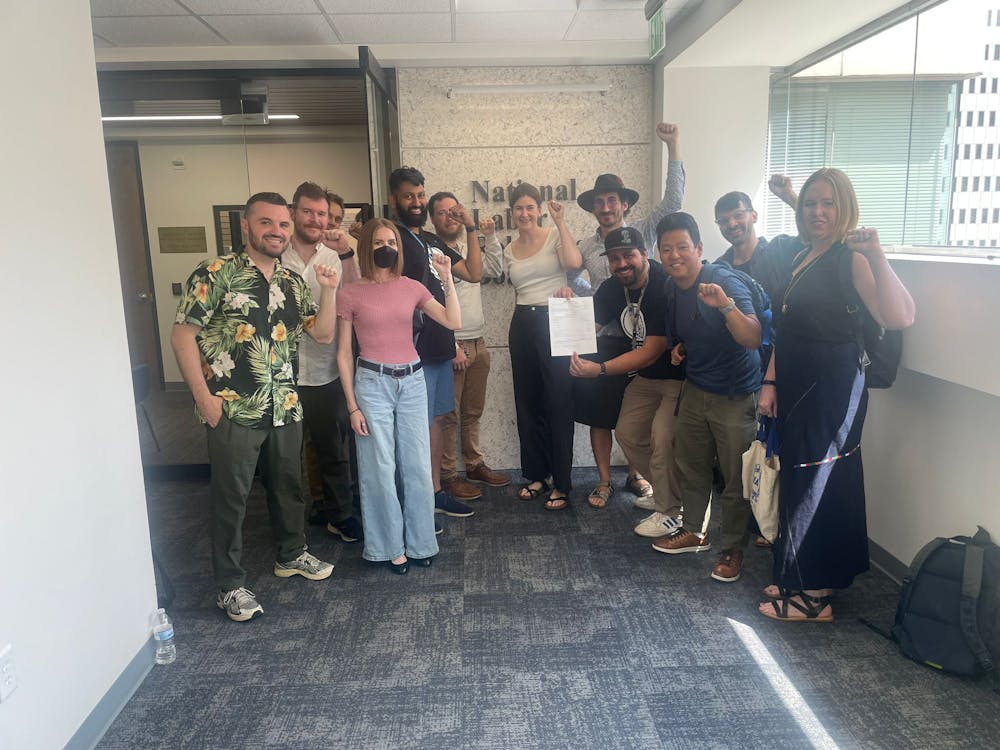Holly Taylor, Maria Merritt and David Dowdy spoke about social justice from the perspective of economic evaluation at a seminar hosted by the Berman Institute of Bioethics on Monday, Feb. 13. The seminar, called “The Incorporation of social justice into economic evaluation of novel drug regimens for MDR-TB,” is part of an ongoing series held twice a month.
Taylor, Merritt and Dowdy are collaborating on a project to evaluate the effectiveness of a widely used treatment for tuberculosis called MDR-TB. Unlike traditional methods of evaluation, where cost-effectiveness is solely measured in terms of economics and success rates, this project accounts for the social and psychological aspects that patients experience while undergoing treatment for tuberculosis.
The project uses a Cost Effect Analysis to compare the currently used treatment for MDR-TB with a new, different treatment. This form of analysis is unique in that it accounts for the well-being of the patient, measured in terms of “one year of high-quality life.”
Dowdy, an associate professor of epidemiology at the School of Medicine, was the first to explain the reasons for undergoing the project.
“Treatment for MDR-TB is particularly burdensome,” Dowdy said. “Understanding this is really critical to understanding why we’re interested in this as a potential venue for evaluating social justice in economic evaluation. This is something that doesn’t just affect economies of those countries that have to pay for this — it really impacts people’s lives.”
Dowdy emphasized that treatment for MDR-TB could last two years, with a patient having to consume a total 14,600 pills over the course of their treatment. Dowdy laid out a scenario to explain the situation.
“This is a ton of medication,” Dowdy said. “Imagine if you had someone there every single day saying, ‘You have to take these pills,’ and it wasn’t just one or two, it was a handful.”
Dowdy described the effects of the treatment, which can be debilitating for patients.
“These pills also made you feel ill,” Dowdy said. “Three out of every four people have nausea, and 15% of people who take these drugs lose their hearing for high pitches. This is a treatment that is not just expensive. It really affects people and their lives.”
Taylor, an associate professor in the Department of Health Policy and Management at the Bloomberg School of Public Health, then elaborated on the empirical aspect of the project, which involved conducting interviews with MDR-TB patients. She elaborated on both the challenges and rewards of conducting such interviews.
“We decided to do three site visits,” Taylor said. “The power of direct engagement with the place and its people is very powerful. Some limitations are that we speak with patients who were willing to talk to us. In fact, we could only speak to people who were doing fairly well.”
The project involves conducting interviews with not only patients undergoing treatment, but also with those who provide the treatment and other members in the community.
“Providers can speak about the aggregate experience, and speak to those who we might not be actually able to engage with it directly,” said Taylor.
Taylor explained the current state of the project.
“We did in-depth interviews with our first site visit to Cape Town, and we’re currently interpreting data analysis at the moment,” said Taylor. “Our intent is that the product of those interviews will be a preliminary set of information that we could feed into the social justice assessment.”
Merritt, associate professor in the department of international health and a core faculty member of the Berman Institute, described what they hope to accomplish in the future with the project.
“We’ll use this data to construct social justice assessments that we hope will be applicable to each major type of treatment out there,” Merritt said.
Merritt explained that it is possible that some treatments have conflicting advantages. For example, a treatment may be cheaper but can negatively affect the patient’s lifestyle.
“Priority setting may involve trade-offs between economic efficiency and the alleviation of systematic disadvantage,” Merritt said. “What we are trying to do is study this Public Health problem in the context of novel drug regimens for MDR-TB.”
Merritt reflected on the patients she met while conducting interviews.
“We often think back to the very experience of doing the interviews and being with the people who were kind enough to speak with us,” Merritt said. “One patient was studying to become a professional nurse at the time of their diagnosis. They felt that needing to be on treatment for two years had changed their life completely. She told us about her worries of not achieving her goal, and having to see her colleagues around her becoming professional nurses.”
Merritt concluded that the social and psychological aspect of a treatment is an issue often disregarded in public health. Merritt emphasized that social justice should be a key component for policy making in health care.
“If you want to achieve fairness and priority setting for health care and resource allocation, it not only requires that you consider the distribution of health outcomes, but also the distribution of advantages and disadvantages in people’s broader life experiences. This is what we mean by social justice,” she said.




